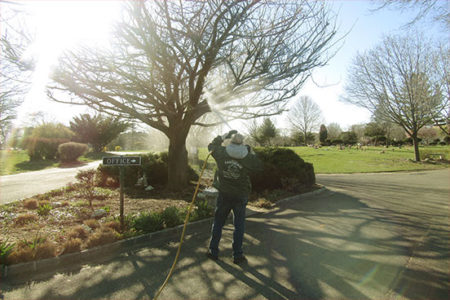
Posted On:
Category: Category:
Alternative EarthCare Discusses Important Facts to Know About Spring Dormant Oil Application
Alternative EarthCare Discusses Important Facts to Know About Spring Dormant Oil Application
LONG ISLAND, N.Y. February 12, 2019 Alternative EarthCare has been providing quality residential and commercial services across Long Island, New York since 1996. Specializing in mosquito, flea, and Hampton’s tick control service, traditional lawn services (including aeration and seeding), irrigation system services, tree removal and pruning, and Christmas and holiday light installation, the team of professionals successfully caters to your needs in the least toxic, most organic way possible.
Spring is upon us again, and with it, the need for many landscaping chores to ensure healthy and attractive properties, trees, and plants. One such vital task is that of spring dormant oil applications to heal and protect trees and plants from damaging diseases. Alternative EarthCare discusses important facts to know about the spring dormant oil application.

- Spring dormant oils help battle and plant tree diseases
- Oyster shell scale Oyster shell scale impacts trees and plants such as maples, lilacs, dogwood trees, and dozens more. Known by its grayish, oyster shaped scales, this tree and plant disease robs its hosts of precious fluids and causes wide-spread encrustation of bark, often leading to branch death.
- Verticillium wilt This soil-borne fungi reaction causes leaf curling, dry and discolored leaves, defoliation, bark death, and can even cause branch and shoot dieback and sudden collapses of trees and plants. Verticillium wilt impacts a wide variety of trees and plants such as ash, elm, redbud, magnolia, oak, dogwood, and maple trees, rose bushes, and honeysuckle, and vegetables such as asparagus, cucumbers, and tomatoes. Verticillium wilt is especially dangerous because of its ability to easily spread from plant to plant systemically.
- Powdery mildew While not often linked to tree and plant death, powdery mildew is considered a troublesome disease due to its ability to spread swiftly and easily on the wind and traveling insects and wildlife. Powdery mildew causes leaf curling, leaf and flower damage, and early bud-dropping on trees and plants such as most fruit trees, grape vines, strawberry bushes, and maple trees.
- Spring dormant oils should not be applied to all trees
- Several species of trees and plants will not tolerate dormant oils Avoid dormant oil exposure to trees such as varieties of spruce, and cedar, as well as several varieties of maples, such as Japanese maples, red maples, and sugar maples. These can be sensitive to and react poorly to dormant oils.
- Spring dormant oils should be applied primarily to trees and plants that have shown signs of disease Don’t apply dormant oils haphazardly, but rather focus on trees and plants that have been impacted by tree disease or are adjacent to and potentially impacted by those neighboring plants and trees that have been infected.
- Timing is everything
- Temperatures must be right Dormant oils should be applied when temperatures are between 40°-70° Fahrenheit for at least a three-day
- Dormant oils must only be applied during dormancy Dormant oils should only be applied during dormancy in early spring.
- Dormant oils require the proper conditions It is important to ensure that conditions will not be windy and that there will be no rain for at least 24-hours to allow dormant oils to saturate and penetrate branches and trunks.
Using a professional matters It makes good sense to utilize professionals for dormant oil applications because they will understand specific tree and plant requirements and tolerances. Professionals will be able to apply oils in the most full-coverage, environmentally responsible, and effective ways to positively impact tree and plant health, and will do so in the appropriate time-frames for the best results possible










